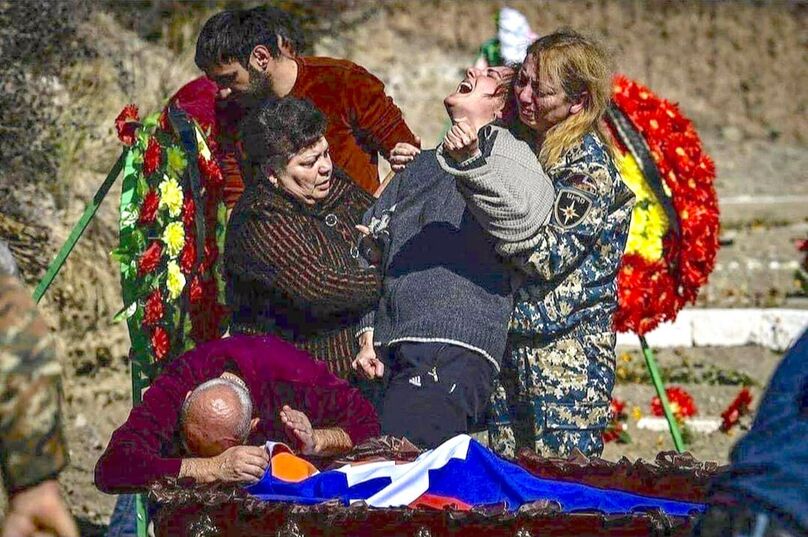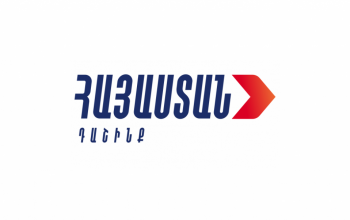By Ara Mgrdichian
Armenians have been viewed and acted upon by much of institutional and civilian Turkey and Azerbaijan (often in league with other states and global institutions) with a prejudicial speed and intensity of violence (bereft of commensurate media portrayal) deeply rooted within a bloody history of murder, kidnapping, torture, slavery, rape, looting, and genocide that has never been truly resolved, continues intensified to this very day, and has remained bereft of real operational recognition or reparations.
The very existence of living, breathing archetypes of Armenianess and or Armenian “otherness” are deemed fatal and fateful threats to the criminally (and historically) privileged Turkic perpetrators of mass violence and genocide, as well as their masters, cohorts, and allies. Thus, Armenians are still physically and symbolically cut down, ethnically cleansed, and depopulated wherever and whenever possible, even in their own indigenous lands—Artsakh and Armenia, as we speak–by oppressors (and their home-grown collaborators) who wield state authority, international backing, and societal privilege with utter abandon.
The Genocide continues and intensifies for it has never stopped and has found ghoulish allies within the Armenian polity.
The underpinnings fueling the perceived threat of Armenian otherness, are myriad and run the gamut from psychological dysfunction and disorders borne of the perceivers and propagators of such to misplaced personal/group fears and inadequacies to class and state promulgated cultural/group phobias and biases, all nested within the greed and megalomania of regional and world powers in pursuit of economic and political hegemony, in this case, through the total destruction of all Armenian cultural potential past, present, and future.
The foundations of these toxic dynamics lay squarely within the false narratives and resultant violence of contrived Turkic historical constructs and revisionism weaponized further by transnational corporate and state greed, resulting in mass cultural and economic appropriations over time and continuing still.
The usurping of Armenian indigenous lands and territories, the disruption of developing, indigenous Armenian demographics through dislocation, dispossession, and deportation, vis a vis trans-territorial socio-economic expansion and conquest, all incorporate tenets and characteristics of the rape culture and system of colonialism that has intensified the scope of imperialism, genocide, slavery and indentured servitude, now into the 21st century, and of which we are all the ongoing derivative heirs, victims, and, often unwitting, stewards.
Armenians are certainly not the only tragic targets of this kind of Turkic and/or colonial/imperial oppression and violence—the list is sadly long, global, gruesome, and spans human history to the present day.
However, Armenians are the most current blatantly and continuously, historically targeted entities in an increasingly fragmented and politicized regional and global social landscape that claims to protect all its citizens, regardless of sex, creed, race, or religion—yet kills them, wantonly, on the international stage.
There is one characteristic in particular which must be remembered, foremost, and which separates Armenians from all other ethnic groups in Turkey, Azerbaijan, and in the region: they are the indigenous people of the Armenian Highland which includes Artsakh (Nagorno Karabakh; currently occupied by Azerbaijan), the current Republic of Armenia (partially occupied), Nakhichevan (currently occupied by Azerbaijan), Javakhk (currently occupied by Georgia), and what is now considered most of Eastern Turkey (Western Armenia; currently occupied by Turkey), and much of what is considered Western Azerbaijan (Eastern Armenia; currently occupied by Azerbaijan), whose Armenian or Armenid ancestors have continuously populated the region for upwards of 12,000 years—until, of course, the last hundred or so.
These very same Armenians have also been and continue to be violently murdered, often en masse, forcibly displaced, dispossessed, and tortured, as well as their lands usurped and natural resources illegally appropriated as has been the case throughout their tumultuous history, with global audiences gawking at the spectacle at most.
And, that reality has been magnified a thousand-fold in recent months and days to, once again, reveal not only the bloody face of this ongoing historic, international shame and injustice, but has lain bare the magnitude of the connected, manifold vectors of co-conspirators, large and small, involved in the erasure of a people and their lands; the social and societal failures plaguing all segments of the international community, from farcically inefficient social justice promises and human rights programs to the great qualitative divide between international (and Armenian state) policing agency tactics and the lofty notions these very same claim to protect.
The Genocide ongoing in Artsakh and Armenia has, also, made clear those elements (read: enemies), both high and low, from both inside and outside of Armenian society–in fact, both in and outside of the Armenian government (as well as other foreign state structures)–who seek to foment unbridled chaos in this time of great collective vulnerability and instability for the sake of personal gain, political power, and greater market share.
Perpetrators of genocide, and their allies, have always attempted to assuage their dire fear and guilt, while maximizing their ill-got gains, through the continued murder of their victims’ progeny, and the destruction of any cultural and social spaces of real empowerment they may occupy, over and over again and by any means necessary.
It is as if this endless, morbid, human sacrifice, to a slew of what must be horrific, internal demons (read: exploitative, racist economic and political agendas), would ever quell the voices of all those unjustly treated, summarily murdered, and forever dispossessed.
And, of course, the resultant denial of this treachery is the final stage of genocide, ongoing, with, in this case, genocide and its denial both occurring simultaneously in the bright light of day and across millions, dare I say, billions of smart phone screens the world over.
The criminal and murderous heart knows well, even in its darkest depths (regardless of tint or hue), that, sooner or later, the truly vigilant children of the innocent dead will always rise–especially in the case of the Armenians–with their ancestors in tow, and will dispatch unfettered justice against their murderers and oppressors across all time and space, and, quite often, in the most unexpected of places.
The perpetrators of injustice and murder, regardless of station and locale, must finally stop their heinous crimes (or be stopped…) before yet another generational maelstrom of violence is unleashed, this time from all quarters–one that will release an unparalleled tide of human conflict and suffering that can only benefit those pathologic elites who divide, conquer, and profit from killing and exploitation, no matter the provenance of the violence wrought.
Ara Mgrdichian is a writer, artist, and counselor, whose work—creative, analytic, and therapeutic—often deals with issues of epigenetics, transgenerational justice, memory, and trauma. He’s lived in Los Angeles since the age of two, and in the Republic of Armenia from 1990–93 and from 2003-2004, with extended stays in the Republic of Artsakh.
He has also worked as a teacher, counselor, journalist, and essayist; published poetry and prose; and provided curatorial writing and direction for arts and educational projects.
Mgrdichian is a founding member of Exile Biweekly; his work has been included in the anthology, “Another America,” with noteworthy authors Donald Freed, Harold Pinter, and A.J. Langguth. He has also been featured in the late Samvel Mkrtchyan’s, “Anthology of Armenian Poets.”
He has also previously served as advisor to the Deputy Education Minister of Armenia, while teaching and participating in humanitarian aid efforts in country.
He has received a variety of private and public-sector awards for his efforts with young people, schools, and the community.
Much of his work can be found at akmipress.com.




